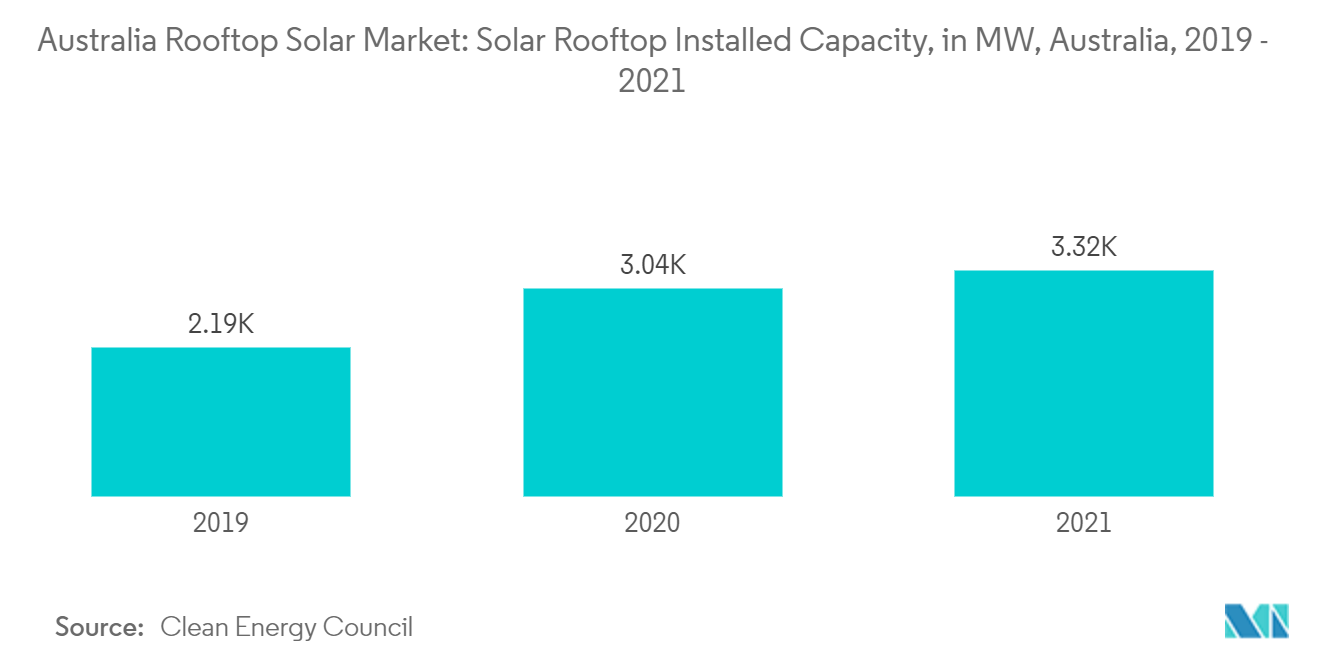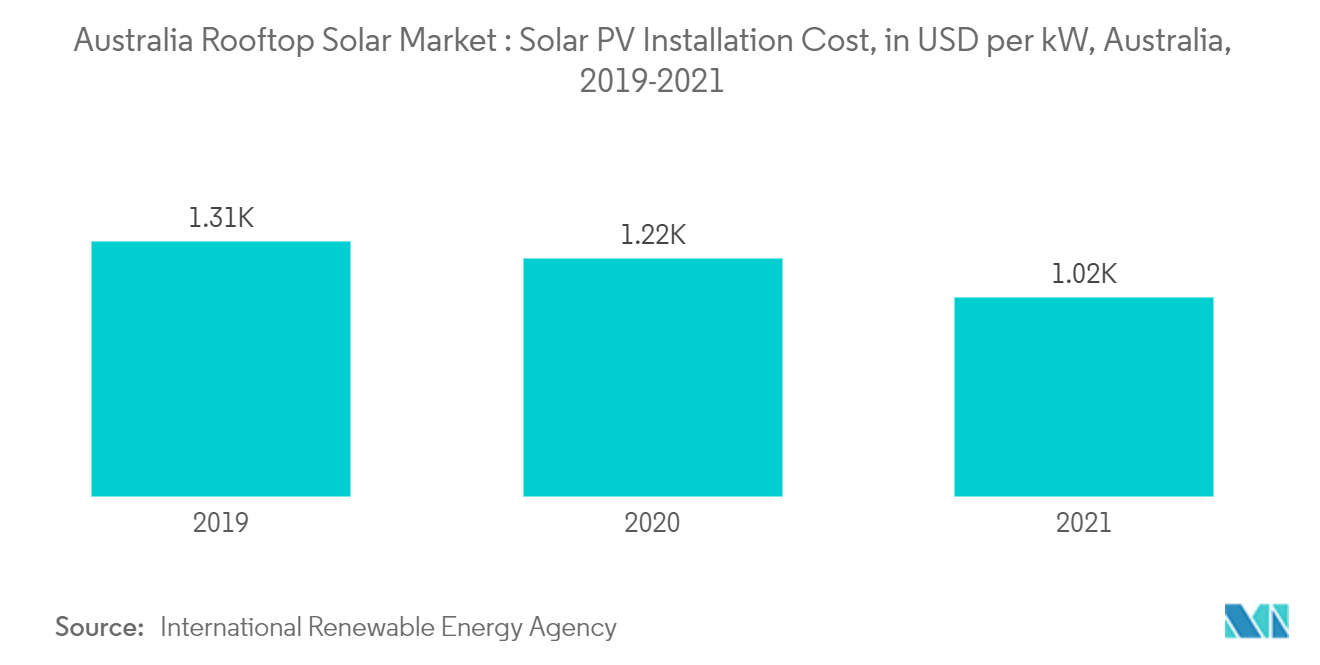Market Trends of Australia Rooftop Solar Industry
Residential Segment to Dominate the Market
- Australia is one of the leading countries in the solar PV market, driven primarily by household rooftop installations. More than 27.3% of homes are connected to rooftop solar PV, with almost 3 million households enjoying the benefits of rooftop solar across Australia.
- As of December 2021, there were 389577 rooftop solar installations, the highest number in the industry's history. This resulted in the industry adding 3 GW of new capacity in 2021.
- In 2021, small-scale solar (systems up to 100 kW) was responsible for 24.9% of Australia's clean energy generation and produced 6.5% of the country's total electricity.
- Electricity production from solar PV has zero greenhouse emissions, which is likely to drive the demand for solar rooftops in the residential segment.
- Around half of the counties have the unused potential for rooftop solar in residential zones. It is estimated that only around one-fifth of all residential buildings have installed a rooftop solar system.
- The eastern states in the country accounted for around 70% of the total installed capacity. Queensland, New South Wales, South Australia, and Western Australia are the leaders in rooftop solar installation. Around 1-in-3 houses in South Australia and Queensland have solar PV installation.
- The small-scale solar added 3316 MW of new capacity in 2021, compared to the previous year of 2963 MW set in 2020. New South Wales once again installed the newest rooftop solar capacity in 2021, adding 996 MW throughout the year, followed by Queensland with 854 MW, Victoria with 681 MW, and Western Australia with 367 MW
- While most PV installations in Australia are residential, rooftop solar on commercial buildings is growing. Hence, the residential segment is expected to dominate the market.

Declining Costs of Solar PV Driving the Market Demand
- Declining solar PV costs and the increasing electricity costs in the country are estimated to result in huge demand for the rooftop solar market during the forecast period.
- As per IRENA's Renewable Power Generation Costs statistics, Australia's solar PV cost reached USD 1023 per kW in 2021 from USD 7803 per kW in 2010. The declining solar PV installation costs are expected to drive the rooftop solar market during the forecast period.
- Another cost-effective advantage of solar PV in electricity generation is that the excess electricity produced from solar PV can be directed into the grid, delivering a feed-in payment, or it can be stored in a rechargeable battery for later use.
- The revenues generated or savings that occur in electricity costs by selling PV electricity are almost equal to or higher than the long-term costs incurred during financing and installing a PV system. Thus, the technology is more beneficial for end users on account of cost savings.
- Furthermore, the country offers a solar credit scheme. Under this initiative, every megawatt-hour of qualifying energy generation is eligible for large and small-scale technology certificates (LTCs and STCs). They offer a discount on the cost of installing the solar system. Hence, the declining costs of installing solar PV are likely to drive the market.


